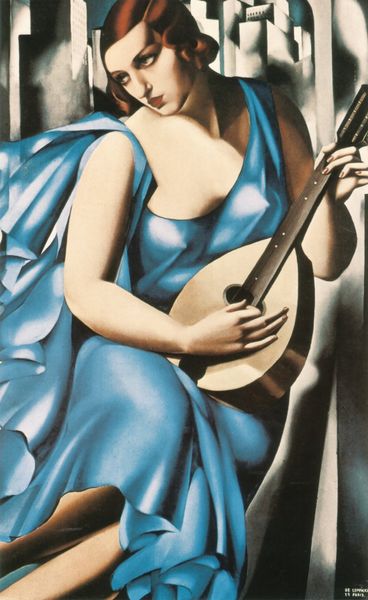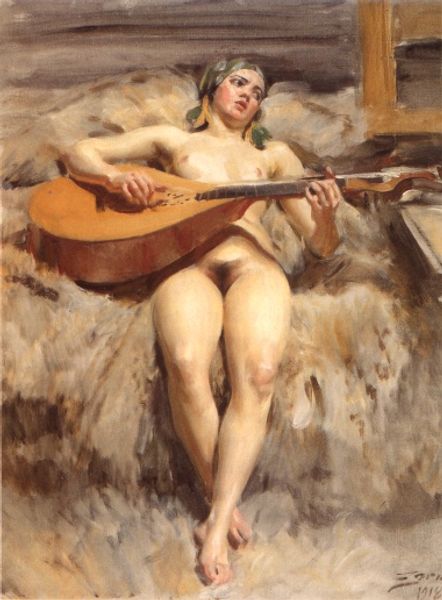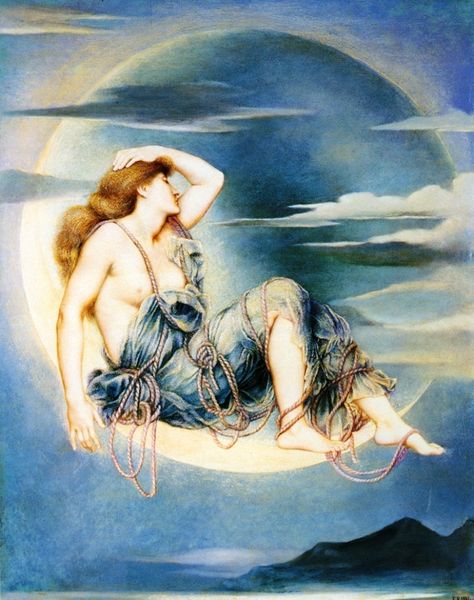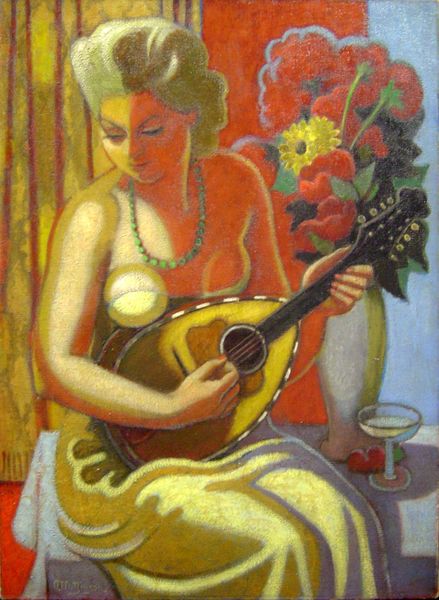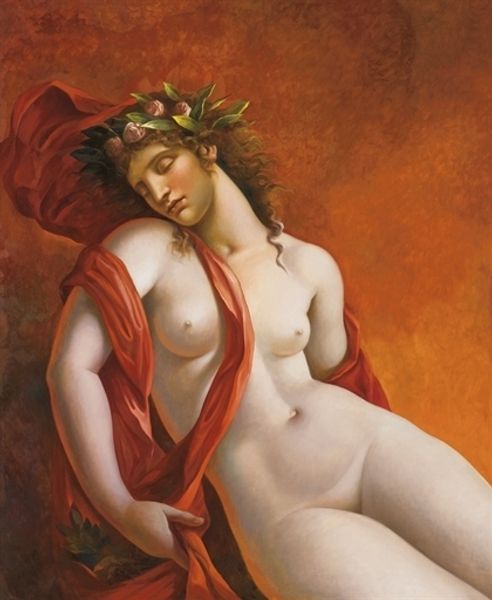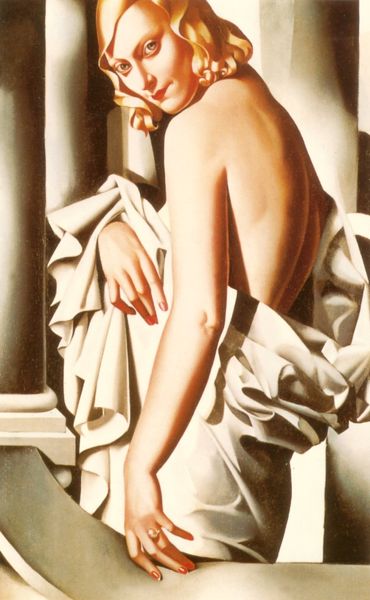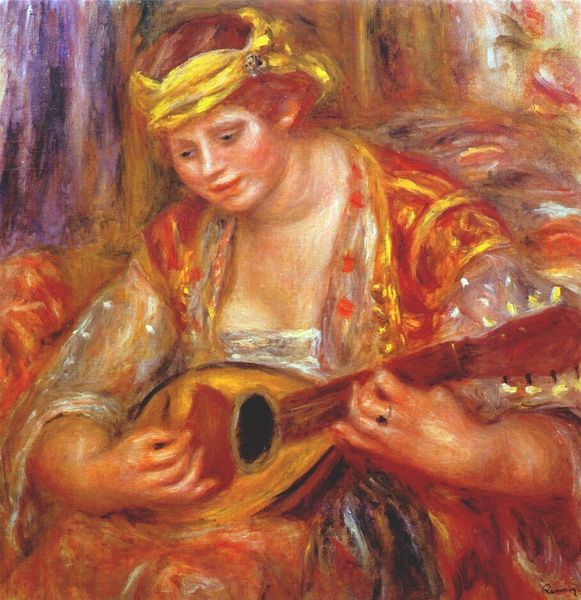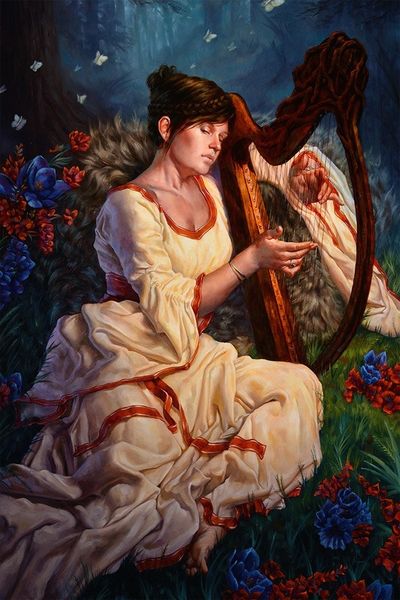
Copyright: Tamara de Lempicka Estate LLC
Editor: So, here we have "Amethyst" painted by Tamara de Lempicka in 1946 using oil. It's quite a striking portrait; the subject's gaze is almost unsettling, yet the scene is also very classical. What strikes you when you look at it? Curator: The first thing that arrests me is the interplay of geometric and organic forms. Observe how Lempicka contrasts the smooth, almost porcelain-like skin of the subject with the sharp angles of the guitar and the folds of the draped fabric. Editor: I hadn’t considered that contrast so explicitly. Is this a common characteristic of her work? Curator: Precisely. She expertly manipulates light to accentuate these forms. The way the light falls across the subject’s body, creating stark contrasts between light and shadow, is very characteristic. Have you noted the artist's application of the *glaze*? Editor: The...glaze? Please elaborate? Curator: Look at how the paint application isn't opaque but translucent. The visual effect of Lempicka's work relies on its *layered effect,* to suggest dimensionality with its subtle gradations in color and tone. Notice this particularly around the face, shoulders, and guitar of the figure portrayed in the artwork, but also visible to lesser extents within the draping or rocky landscapes too! Editor: It is masterfully constructed. Curator: Absolutely. Lempicka uses this artistic approach of balancing of color and light, of geometry versus figure, to elicit emotional response in the artwork's consumers. Editor: I'm now beginning to grasp the layers of visual rhetoric here! The relationship between figure and light is remarkable and the application is incredible. Thanks! Curator: Indeed. It reveals a deep engagement with not only form, but also with the semiotic potential of art itself.
Comments
No comments
Be the first to comment and join the conversation on the ultimate creative platform.
